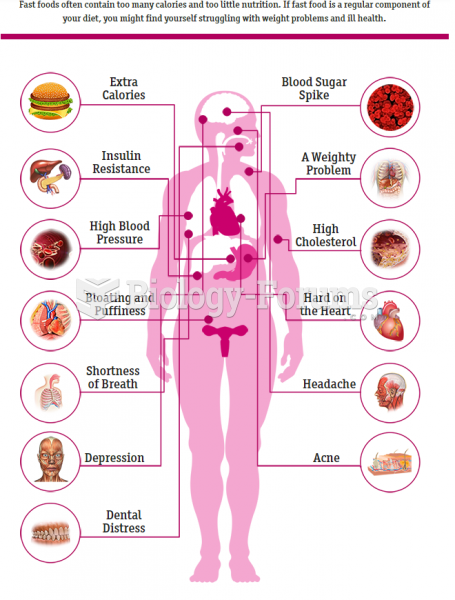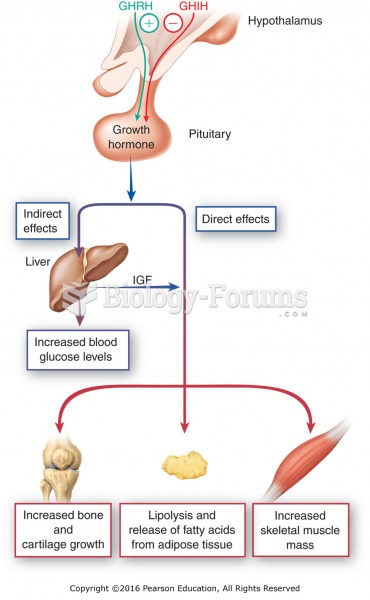Answer to Question 1
ANS:
Some ranchers in the United States treat cattle with bovine growth hormone (BGH). All cows make BGH naturally, but when given higher doses, animals pro- duce leaner meats, and dairy cows produce more milk.
Scientists can genetically alter bacteria to produce BGH, which allows laboratories to harvest huge quantities of the hormone and sell it to farmers as a drug. Indeed, traces of BGH do remain in the meat and milk of both hormone-treated and untreated cows. BGH residues have not been tested for safety in human beings because residues of the natural hormone have always been present in milk and meat, and the amount found in treated cows is within the range that can occur naturally. Furthermore, BGH, being a peptide hormone, is denatured by the heat used in processing milk and cooking meat, and it is also digested by enzymes in the GI tract. The FDA has determined that BGH absorption does not occur in humans and that BGH is biologically inactive in humans even if injected. According to the National Institutes of Health, As currently used in the United States, meat and milk from hormone treated cows are as safe as those from untreated cows. Whether hormones that have passed through the animals into feces and then contaminated the soil and water interfere with plants or animals in the environment remains controversial.
Answer to Question 2
ANS:
Like hormones, antibiotics are also intentionally given to livestock, and residues may remain in the meats and milks. Consequently, people consuming these foods receive tiny doses of antibiotics regularly, and those with sensitivity to antibiotics may suffer allergic reactions. To minimize drug residues in foods, the FDA requires a specified time between the time of medication and the time of slaughter to allow for drug metabolism and excretion.
Of greater concern to the public's health is the widespread use of antibiotics in food animal production and the consequent development of antibiotic resistance. Physicians and veterinarians use an estimated 5 million pounds of antibiotics to treat infections in people and animals, but farmers add five times as much to livestock feed to enhance growth. Not surprisingly, meat from these animals contains resistant bacteria. Such indiscriminate use of antibiotics can be catastrophic to the treatment of disease in human beings. Antibiotics are less effective in treating people who are infected with resistant bacteria. The FDA continues to monitor the use of antibiotics in the food industry with the goal of ensuring that antibiotics remain effective in treating human disease. Antibiotic resistance is immediately and significantly reduced when conventional farms remove antibiotics in their transition to becoming organic farms.







